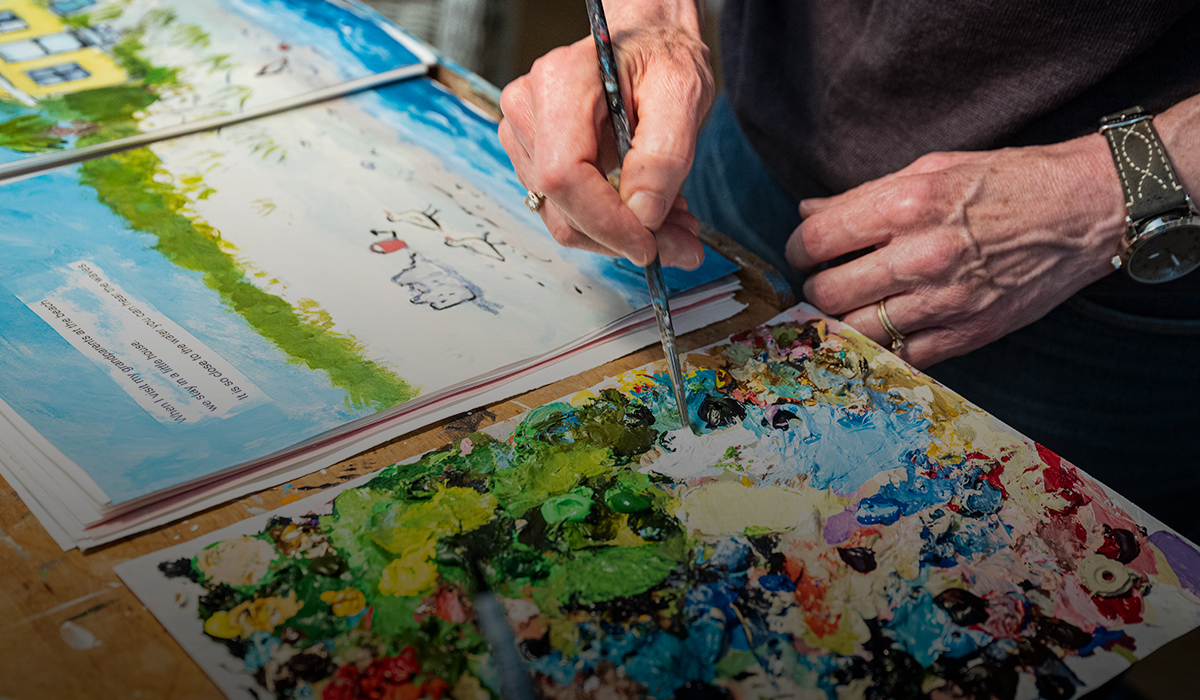
A Storybook Romance
Kevin Henkes x’83 and Laura Dronzek ’82, MFA’93 met at UW–Madison, married, and now make magic together in children’s literature.
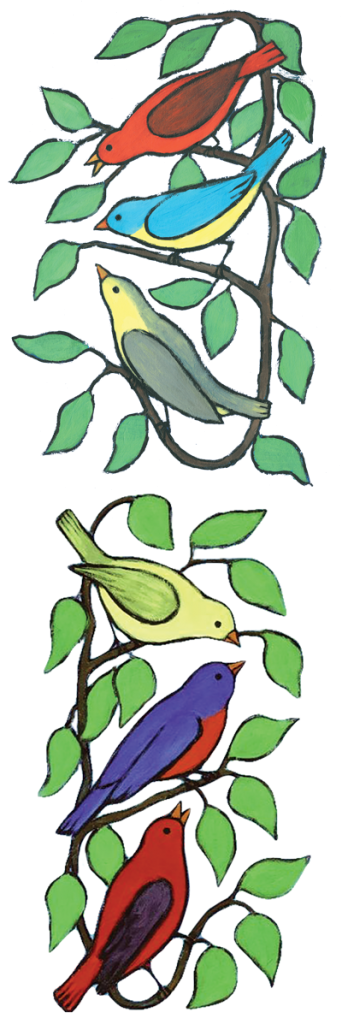 Eight years ago, Laura Dronzek ’82, MFA’93 opened a gift. Handmade, personal, and a surprise to boot, it was the perfect way to celebrate a wedding anniversary: a picture-book manuscript by her husband, Kevin Henkes x’83, superstar of contemporary children’s literature.
Eight years ago, Laura Dronzek ’82, MFA’93 opened a gift. Handmade, personal, and a surprise to boot, it was the perfect way to celebrate a wedding anniversary: a picture-book manuscript by her husband, Kevin Henkes x’83, superstar of contemporary children’s literature.
“Before Spring comes, the trees look like black sticks against the sky,” read the manuscript. “But when Spring is finally here to stay, you will know it. … You will feel it. You will smell it. You will hear it.”
It was a heartfelt ode to everybody’s favorite season. In Dronzek’s case, it was also an invitation to collaborate. Henkes illustrates many of his books, but this one was perfect for her.
Dronzek, a fine-art painter who’s also a sought-after children’s illustrator, happily accepted. The couple soon headed to the side-by-side studios in their Madison home to create When Spring Comes, which was published by Greenwillow Books in 2016. Since writing and illustrating tend to be solitary pursuits, working together has been a refreshing change of pace. Like the words and illustrations in a successful picture book, the two artists have brought out the best in each other in such titles as Winter Is Here, Summer Song, and Birds.
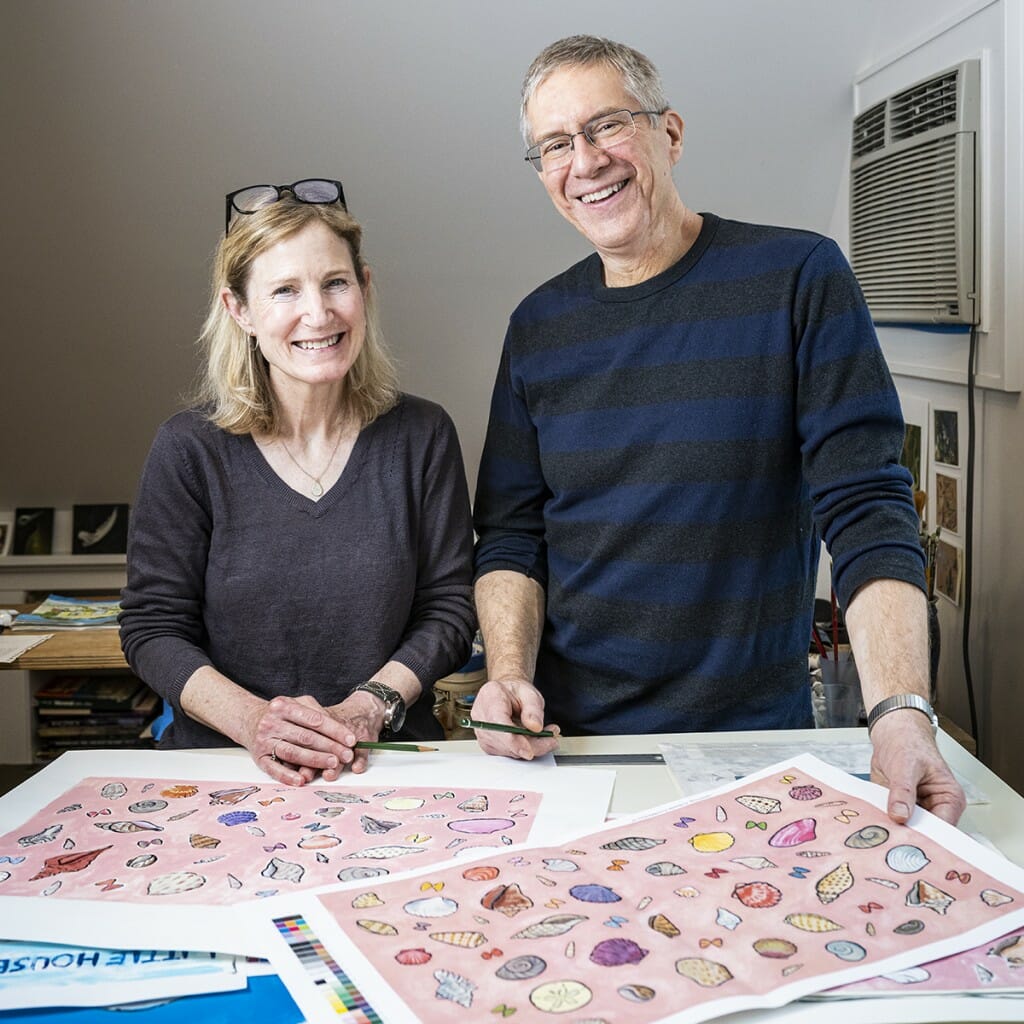
When creating picture books together in their home studios, Dronzek and Henkes tap into a child’s sense of wonder.
“Laura and I trust one another completely. She’s the first person to see everything I make,” Henkes says. “It’s wonderful to have a person in your close proximity who cares about you but can look at the work with a clear, cool eye.”
Their bond involves a shared perspective on life and art — a vision of old-fashioned simplicity reflected in both their exceptional books and their happy home.
Attention to Every Detail
A low-tech lifestyle and a focus on craftsmanship help the pair produce gorgeous work that feels timeless, poetic, and insightful. In their books, no one looks for answers on a smartphone; instead, they turn inward and to their loved ones.
But how do creators of children’s books stay relevant without deep knowledge of TikTok and cat memes? As Dronzek explains, it’s about finding “the extraordinary in the ordinary.” Everyday experiences can bring wisdom and joy; we just have to pay attention. Multitasking and information overload don’t lend themselves to this state of mind, so Dronzek and Henkes avoid them. This lets them focus and carefully observe the world around them.
Henkes is exceptionally old-school: he doesn’t have an email address and makes his book art using a Mickey Mouse light-up drawing desk he’s owned since childhood. Highly meticulous yet emotionally intelligent, he could probably teach a computer a thing or two.
“Kevin is very precise when he does preliminary sketches and dummies. He measures everything,” says Dronzek.
When creating a manuscript, Henkes writes long-hand in notebooks, then uses Dronzek’s college typewriter to type what he has scrawled. This process helps him distill his stories into a balanced elixir of wit, wisdom, and sensitivity. His solo creations have earned numerous awards, including a Caldecott Medal for Kitten’s First Full Moon, Newbery Honors for Olive’s Ocean and The Year of Billy Miller, and the big kahuna: the Children’s Literature Legacy Award, which he won in 2020.
“The Legacy Award was an utter surprise,” Henkes says. “My first thought was that I was too young to receive it — forgetting, for the moment, that I was 59 and that I’d written 55 books. To know that I’m included on a list with, among others, E. B. White, Beverly Cleary, Maurice Sendak, and Virginia Hamilton still gives me pause.”
Dronzek is a force of nature in her own right, cultivating a loyal fan base with her illustrations for George Shannon’s White Is for Blueberry, Helen V. Griffith’s Moonlight, and Phyllis Rowand’s It Is Night. She has also built a successful fine-art career, with gallery exhibitions across the country and works in the public collections at the Memorial Union and the Madison Museum of Contemporary Art.
For children’s books, Dronzek uses lush imagery that helps the reader slow down and appreciate the present moment. An unhurried creative process aids this quest. She creates her illustrations on gessoed paper, a rare and painterly choice in a computer-driven world. After blocking in shapes or a horizon line, she adds layers of paint. The piece finds its identity over time, guided by her attention to detail and composition. Dronzek’s signature style always shines through.
“The colors and lines in Laura’s illustrations are bold, but you feel calm when you look at them,” says Kathleen Horning ’80, MA’82, director of the Cooperative Children’s Book Center (CCBC), a library in UW–Madison’s School of Education. “She gives you the sense of entering into a young child’s world.”
It’s like traveling back to a time when everything around you was new and fascinating. Toddlerhood is one of these times. For many Badgers, college is another. It certainly was for Dronzek and Henkes.
The World Cracked Open
Both artists were undergrads at a colorful moment in UW–Madison history. In September 1979, when Henkes began his freshman year, Bascom Hill teemed with 1,008 plastic flamingos from the student government’s Pail and Shovel Party. Later that month, the Wisconsin Student Association hosted a party that drew 10,000 toga-clad revelers and a camera crew from 60 Minutes. It was an exciting time to study art and human behavior.
“When I came to UW–Madison, the world cracked open for me,” Henkes says.
The UW was an ideal place for the art major to chase his dream: becoming a published children’s author and illustrator. The big draw? Not toga parties, but the Cooperative Children’s Book Center. Recommended by his hometown librarian in Racine, Wisconsin, it was — and still is — just the place for an aspiring author who’d devoted his life to the study of children’s literature. There he could find personal favorites like The Carrot Seed and Rain Makes Applesauce, along with new releases for young readers. It’s also where he met Ginny Moore Kruse MA’76, the CCBC’s director from 1976 to 2002, who was instrumental in his journey to publication.
A milestone in this journey happened the summer after his freshman year. During a trip to meet with publishers in New York City, Greenwillow Books agreed to publish All Alone, a picture book that Henkes began in a class taught by Professor Jack Kean. The New Yorker praised it for exploring solitude “not as something to be feared but as a time to think and feel and to look at things in a new way.”
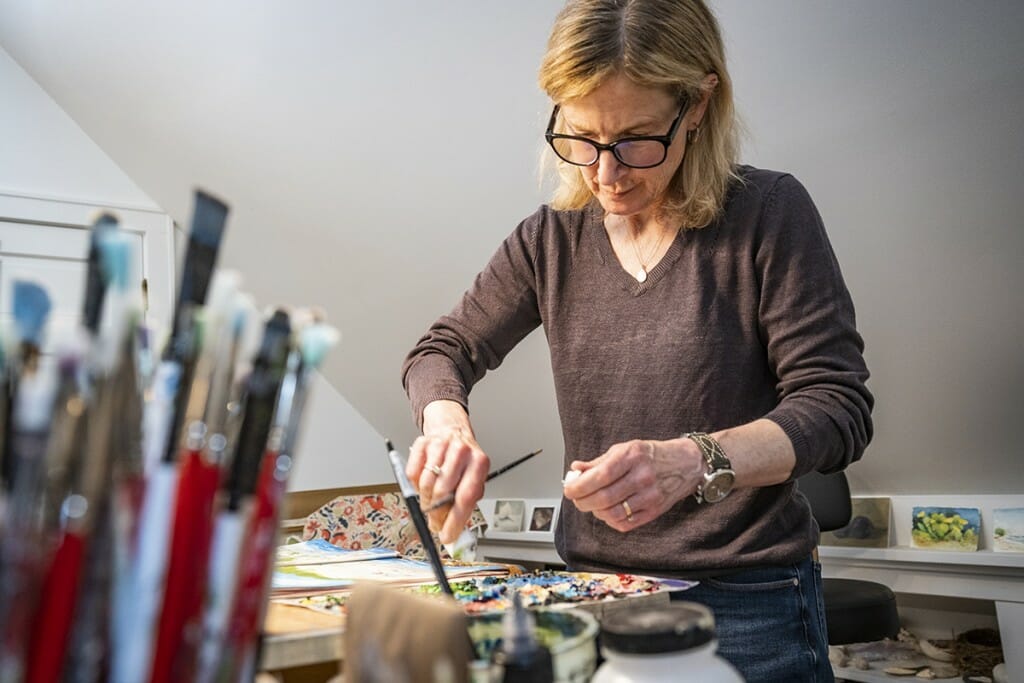
Dronzek uses lush imagery that encourages the reader to slow down and appreciate the present moment.
Like Henkes, Dronzek had long valued solitude — especially time spent in a corner, reading a good book. During her childhood in Deerfield, Illinois, this was a sublime escape from her siblings. It was also a chance to admire art, from Garth Williams’s drawings in Charlotte’s Web to Maurice Sendak’s illustrations in Mr. Rabbit and the Lovely Present. These illustrations were some of her first teachers as she began drawing and painting. Though she spent her youth refining these skills, she didn’t take a college art class until her last semester as an undergrad.
“It was a drawing class I’d been afraid to take because I figured everyone in it was an art major and I was majoring in psychology and English,” she says. “I loved it so much that I kept taking art classes after graduation.”
Dronzek took a UW art class every semester for six years as she worked at a psychology research lab and later a scholarly journal. After that, she earned her MFA in painting and began showing her work in galleries.
While she and Henkes were finding themselves at UW–Madison, they also found each other.
A Match Made in Madison
Dronzek and Henkes met through good, old-fashioned matchmaking. A mutual friend knew they had much in common. Both were artistic. Both had four siblings. They grew up less than an hour from each other. Plus, they both loved books. They were introduced and, lo and behold, sparks flew. The young couple spent time running on the Lakeshore Path, visiting the Elvehjem Museum of Art, and hanging out at the Memorial Union.
Together, they found more UW–Madison mentors, including Walter Hamady, the late artist, book designer, papermaker, and poet.
“Walter made me think outside the box. He always pushed you to reach in the work you were doing,” Dronzek says.
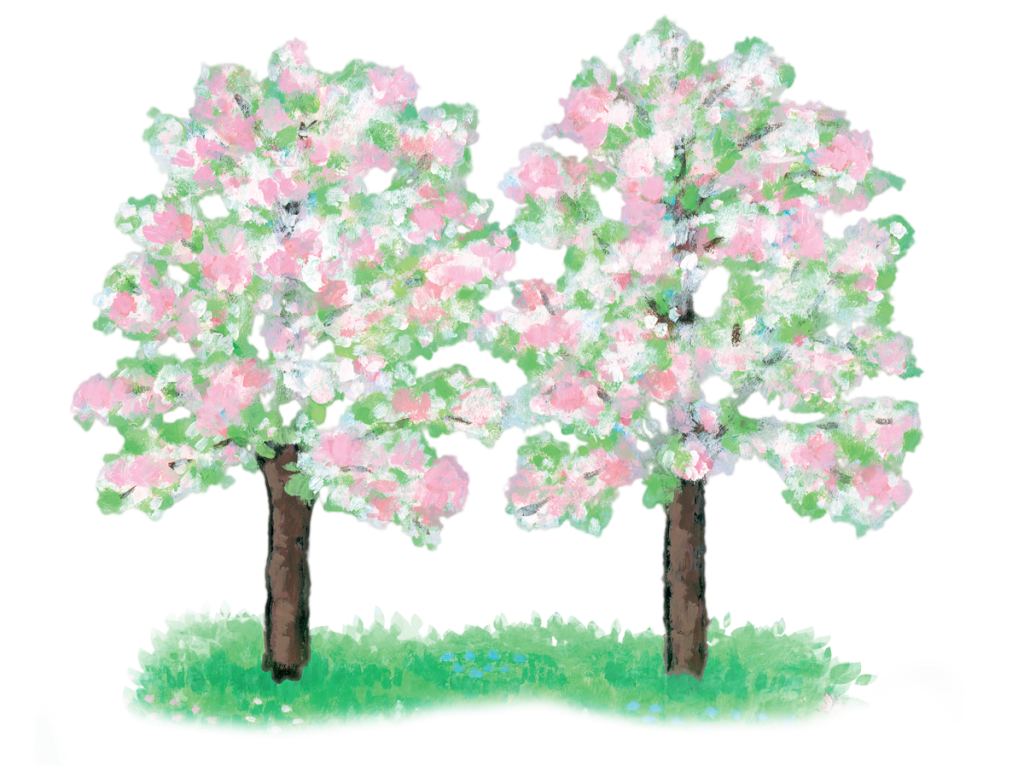
Laura Dronzek’s illustrations throughout this article are taken from Birds and When Spring Comes by her and Henkes.
The late Gertrude Herman ’36, MS’68 of the UW’s library school also challenged their minds while nurturing their souls.
“She knew so much about not just children’s literature but art, philosophy, and history,” Henkes says. “She was one of the smartest people I’ve ever met, and she was so kind and generous to both of us. We became lifelong friends.”
Henkes and Dronzek married and had two children, Will in 1995 and Clara in 1997. They also formed an artistic partnership. Dronzek’s illustration work focused on book jackets until Susan Hirschman, Henkes’s editor at Greenwillow, suggested that she illustrate one of his books. The couple gave it a go with 1999’s Oh! and realized they had as much chemistry on the page as in real life.
The Drama of Discovery
This chemistry soon produced more collaborations. The most recent is a season-themed quartet: Summer Song, In the Middle of Fall, and Winter Is Here, plus When Spring Comes, Henkes’s anniversary gift to Dronzek.
Of course, Henkes and Dronzek aren’t the first married couple to thrive at making children’s books. Philip and Erin Stead, the creators of A Sick Day for Amos McGee, and Russell and Lillian Hoban, the people behind Frances the Badger, are a few of the duos in this club. Yet there’s something distinctive about the work the two Wisconsin Badgers create together.
Birds teems with this singular quality. A girl shares her fledgling knowledge about avian life as birds of different shapes, sizes, and colors appear. She also realizes something thrilling: both she and the robin by her window can sing.
Though a revelation like this may seem small to an adult, it can feel monumental to a child. Henkes and Dronzek tap into this sense of wonder when creating picture books together. A pop of color or a clever pause can represent the drama of discovery, from the awe of the big reveal to the pride that follows.
Sometimes the words and pictures take turns communicating the ideas, and other times they join forces. They’re always attuned to each other and the needs of the audience. It’s another quality that makes the couple’s collaborations so special, says Horning.
“They recognize how the adult reading the book aloud is part of the audience,” she says. “The best picture books — the ones that become part of your family’s life for years — take that shared reading experience to another level.”
Ask Henkes and Dronzek about their proudest career moments, and they’ll mention children named after their characters and envelopes stuffed with grade schoolers’ drawings inspired by Birds. Their work makes an impact, helping countless kids cultivate curiosity and kindness. Meanwhile, we adults get the best gift of all: wonder, anytime we need it, ready to share with those we love. •
Jessica Steinhoff ’01 is the coauthor of Chromatic: The Crossroads of Color and Music. Her kids know all the words to Birds.
Published in the Fall 2021 issue
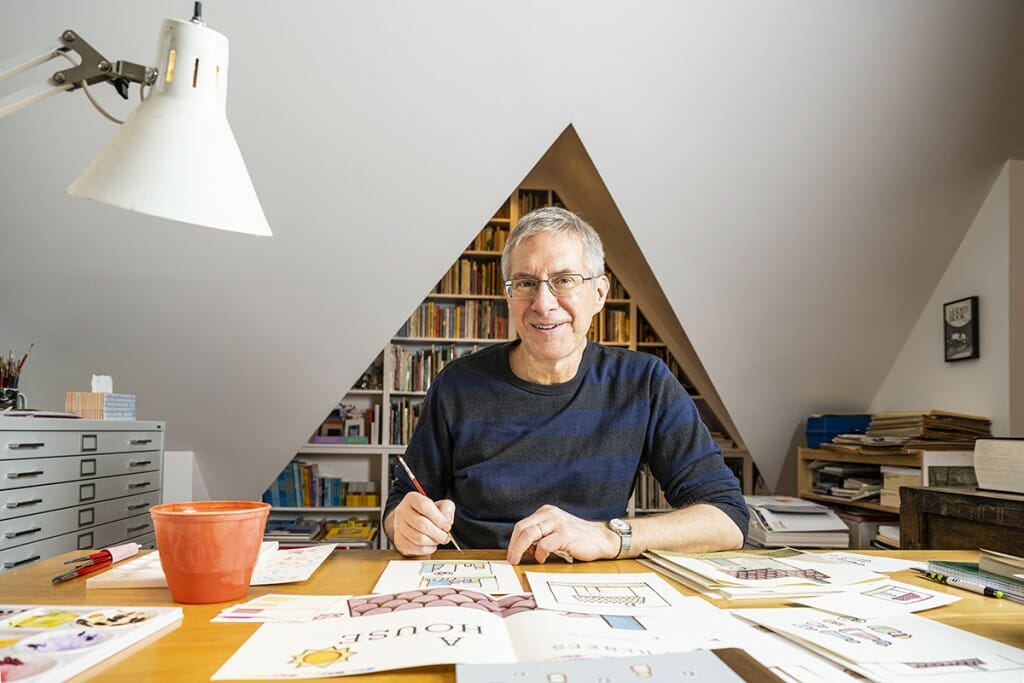
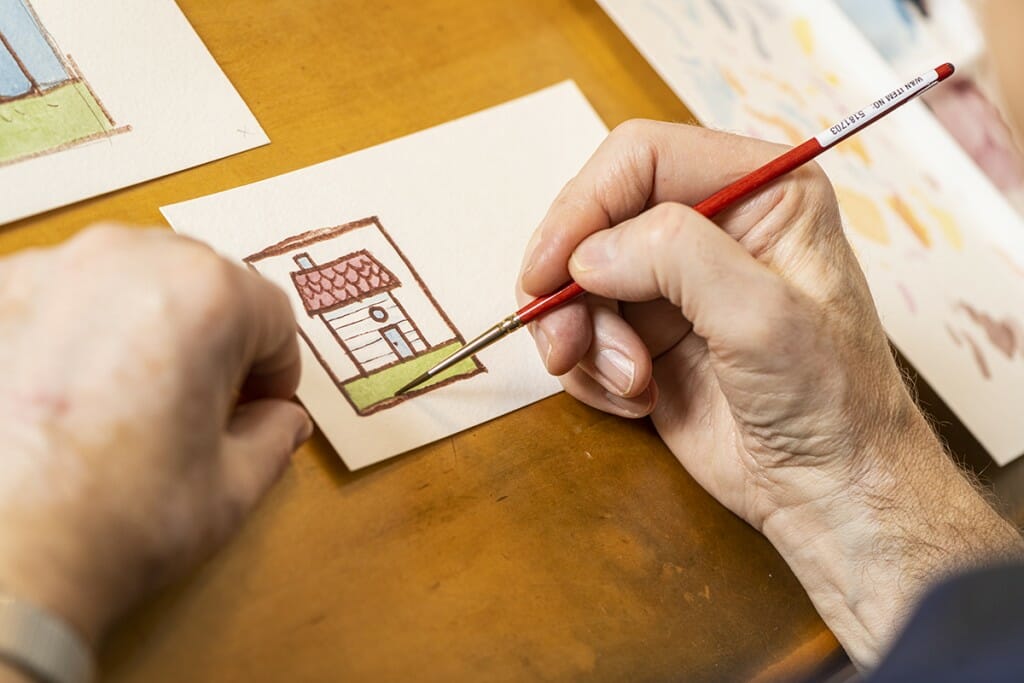
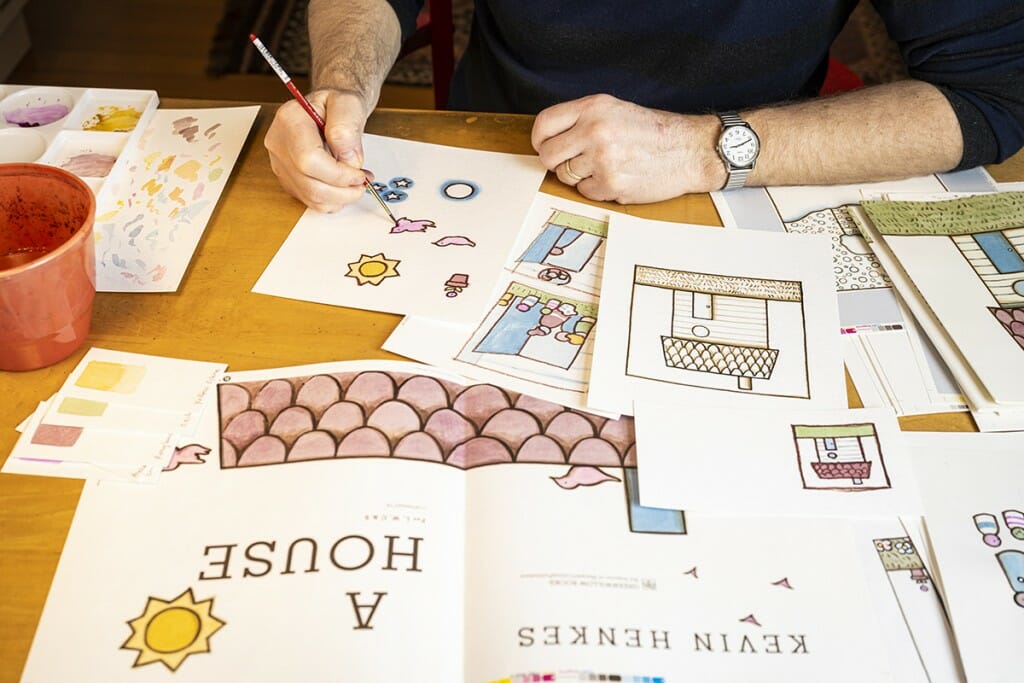


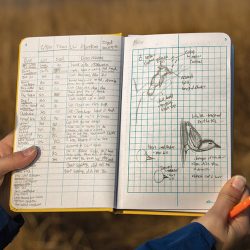
Comments
No comments posted yet.